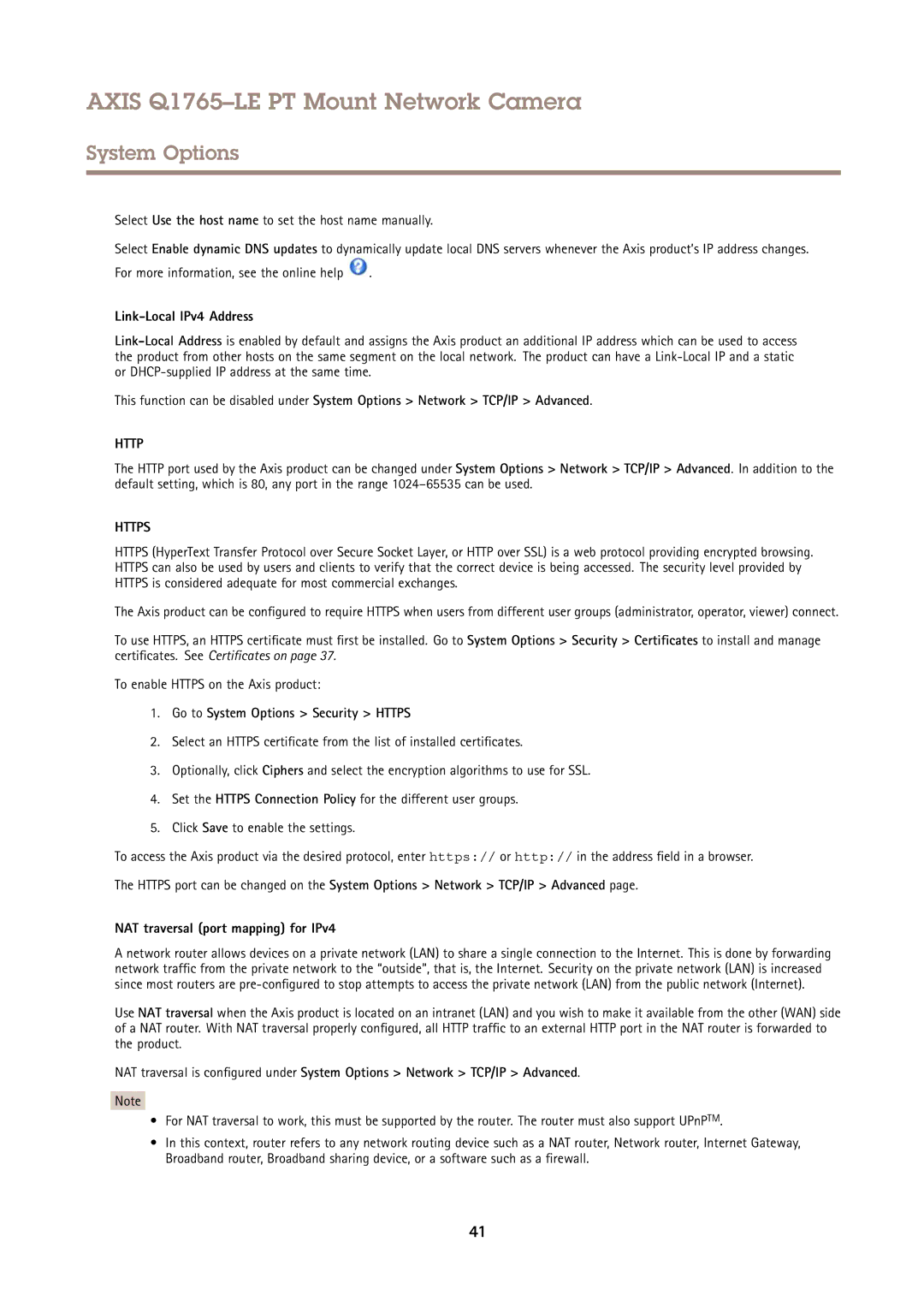
AXIS Q1765–LE PT Mount Network Camera
System Options
Select Use the host name to set the host name manually.
Select Enable dynamic DNS updates to dynamically update local DNS servers whenever the Axis product’s IP address changes.
For more information, see the online help ![]() .
.
Link-Local IPv4 Address
This function can be disabled under System Options > Network > TCP/IP > Advanced.
HTTP
The HTTP port used by the Axis product can be changed under System Options > Network > TCP/IP > Advanced. In addition to the default setting, which is 80, any port in the range
HTTPS
HTTPS (HyperText Transfer Protocol over Secure Socket Layer, or HTTP over SSL) is a web protocol providing encrypted browsing. HTTPS can also be used by users and clients to verify that the correct device is being accessed. The security level provided by HTTPS is considered adequate for most commercial exchanges.
The Axis product can be configured to require HTTPS when users from different user groups (administrator, operator, viewer) connect.
To use HTTPS, an HTTPS certificate must first be installed. Go to System Options > Security > Certificates to install and manage certificates. See Certificates on page 37.
To enable HTTPS on the Axis product:
1.Go to System Options > Security > HTTPS
2.Select an HTTPS certificate from the list of installed certificates.
3.Optionally, click Ciphers and select the encryption algorithms to use for SSL.
4.Set the HTTPS Connection Policy for the different user groups.
5.Click Save to enable the settings.
To access the Axis product via the desired protocol, enter https:// or http:// in the address field in a browser.
The HTTPS port can be changed on the System Options > Network > TCP/IP > Advanced page.
NAT traversal (port mapping) for IPv4
A network router allows devices on a private network (LAN) to share a single connection to the Internet. This is done by forwarding network traffic from the private network to the “outside”, that is, the Internet. Security on the private network (LAN) is increased since most routers are
Use NAT traversal when the Axis product is located on an intranet (LAN) and you wish to make it available from the other (WAN) side of a NAT router. With NAT traversal properly configured, all HTTP traffic to an external HTTP port in the NAT router is forwarded to the product.
NAT traversal is configured under System Options > Network > TCP/IP > Advanced.
Note
•For NAT traversal to work, this must be supported by the router. The router must also support UPnPTM.
•In this context, router refers to any network routing device such as a NAT router, Network router, Internet Gateway, Broadband router, Broadband sharing device, or a software such as a firewall.
41
